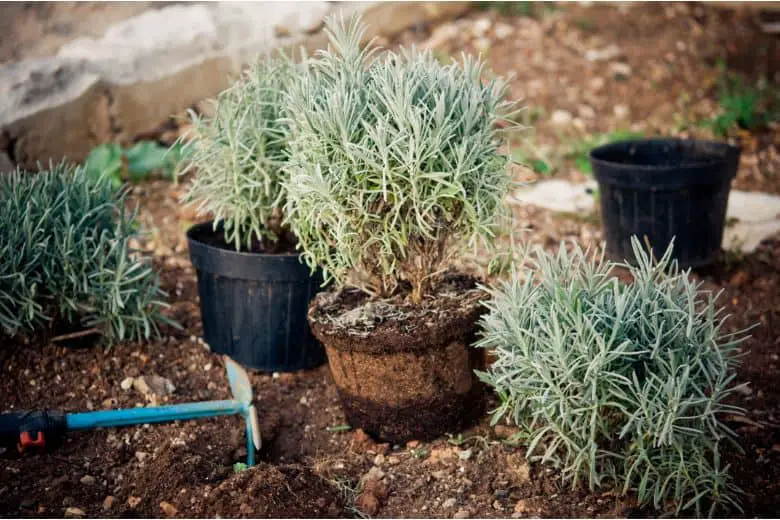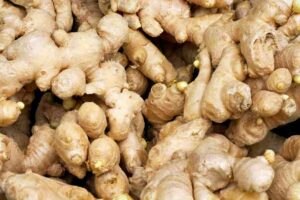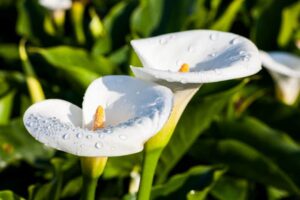
When your lavender plants are looking wilted and droopy, no doubt you begin to worry and think, “Why is my lavender wilting? But relax, you’re not alone.
Wilting is one of the most common problems that lavender growers face. As a lavender lover, it’s distressing to see your beautiful bushes lose their structure and vigor. But don’t panic – wilting is rarely a death sentence for lavender. There are often simple fixes you can try to get your plants perking up again.
Eventually, today, we will discuss the top reasons for lavender wilts and what you can do about it. Besides, we have covered things like under-watering, over-watering, nutrient deficiencies, pests, and more. By learning to identify the cause of wilting, no doubt you will be able to get your lavender plants back to their normal healthy state in no time.
Read on to find out why your lavender is wilting and how to address it.
Causes of Wilting Lavender ( 6 Main Reasons)
Wilting lavender is a common problem faced by many gardeners. Wilting lavender can be caused by a variety of different factors. Have a look.
1. Lack of Water
One of the most common causes of wilting lavender is lack of adequate watering. As with any plant, lavender needs regular water to stay hydrated. The signs of wilting from lack of water are usually temporary – within a day or two of watering, the plant should perk back up.
Lavender is drought tolerant once established but will still need about 1 inch of water per week during the growing season. Make sure your soil has time to dry out slightly between waterings. Soggy soil can also cause issues. Check soil moisture 1-2 inches below the surface before watering.
Avoid overhead watering, as wet foliage can lead to disease issues. Water at the base of the plant instead.
Some other signs lavender may be underwatered include brown or yellowing leaves and stems that aren’t as woody as usual. Be sure to water new lavender transplants regularly until they get established. Use soaker hoses or drip irrigation for deep, consistent watering.
2. Too Much Water
On the other hand, overwatering can also result in wilted lavender. Soggy soil deprives roots of the oxygen they need. The symptoms of root rot from too much water include wilting, yellow or brown leaves, and stems that feel mushy.
Test soil drainage before planting lavender and improve draining soil with organic amendments if needed. Ensure pots have drainage holes. Only water when the soil is mostly dry. Avoid low-lying areas that puddle after rain. Overwatered lavender may not recover – cut back severely wilted stems to encourage new growth.
3. Planting and Transplant Shock
When lavender is first planted or transplanted, it may go through a shock period where it wilts temporarily. This is a reaction to interrupted roots and a result of establishing in a new location. During this adjustment time, lavender needs even more TLC than usual.
Be sure to follow these planting steps carefully:
- Choose a location with full sun, excellent drainage, and fertile, well-draining soil. Lavender prefers alkaline soil with a pH between 6-8.
- Transplant balled and burlapped lavender in spring or fall when the weather is mild. Dig holes twice as wide as the root ball and the same depth.
- Prune off any wilted or broken foliage and roots. Remove flower buds to encourage root growth.
- Plant at the same depth or slightly higher than the original soil line. Tamp soil firmly around roots.
- Water well at planting and use mulch to retain moisture while establishing.
- Water daily for 2-3 weeks until established. Gradually space out watering over the next month.
- Stake newly planted lavender for support if heavy winds or rainfall are expected.
With regular watering and care, transplanted lavender should bounce back within a few weeks. Give it time to put down new roots before worrying.
4. Nutrient Deficiencies
Wilting can also result from lavender lacking important nutrients. As plants mature over 3-5 years, nutrients are used up in the soil. Symptoms of nutrient deficiencies include general plant weakness, stunted growth, and pale or discolored foliage.
The primary elements lavender requires are nitrogen (N), phosphorus (P), and potassium (K). Other important minerals include calcium, magnesium, and sulfur. Getting a soil test will determine if your soil is balanced. Fertilize in spring with a balanced, organic option like compost or a specialty herb fertilizer.
5. Pest or Disease Issues
Of course, wilting can be a symptom of pests or diseases attacking lavender as well. Check foliage and stems closely for culprits.
Common pests include aphids, spider mites, and gray mold fungus. Aphids and mites suck plant juices, causing damage. Spot treat infestations promptly. Prevent gray mold by watering at the soil level only and improving air circulation.
Other diseases like root rot breaking down roots inside the stem can also wilt lavender. Once spotted, treat with organic fixatives appropriate for the identified issue. Remove severely infected plant material. Good cultural practices like spacing plants and using drip irrigation help avoid pest and disease problems.
6. Environmental Stresses
Changes in weather, temperature extremes, and winds can stress lavender temporarily, causing leaves to wilt until they adjust. Wilting usually corrects itself once normal conditions return.
Provide lavender with a protected spot where it can thrive under average seasonal conditions. Avoid frost pockets prone to late or early freezes. Stake or cage lavender when expecting heavy winds or rain. Monitor weather reports and be ready to shelter plants during severe situations.
Symptoms of Wilting Lavender

- Leaves and stems hang down limply instead of being upright.
- An early sign of wilting is leaves losing their dark green color.
- Dehydrated or nutrient-deficient leaves may appear dry and brown.
- Water or nutrient stress can cause lavender to flower earlier than normal.
- Long-term wilting impacts the plant’s ability to grow properly.
- Leaves may look fewer and farther between on wilting lavender.
- Stems aren’t as sturdy or woody feeling as healthy lavender.
- A sign of lower stem or root rot from overwatering.
- Severely wilted leaves may fall off the plant.
- Look for signs of insects, mold, or other pathogens on foliage.
- Examine roots for lack of growth or root rot issues.
Assessing and Treating Wilted Lavender
If your lavender plant is floppy and droopy, don’t panic. First, determine if wilting is due to a temporary or long-term cause by assessing symptoms:
- Temporary wilting corrects in 1-2 days once triggers like lack of rain are resolved. Long-term wilting is often due to root issues and can be harder to fix.
- Gently tug on foliage. Dehydrated leaves will bend easily, while underwatered plants stay limp.
- Check soil moisture and drainage. Soggy soil with yellow leaves is overwatering.
- Inspect for pests, diseases, and nutrient deficiencies based on other visible symptoms.
To treat:
# Water well if temporary wilting from lack of rain. Then, resume the normal watering schedule.
# For overwatering, improve drainage and wait for soil to dry. Cut back severely wilted stems.
# Fertilize or treat diagnosed nutrient deficiencies.
# Identify and treat any pests or diseases.
# Give newly planted lavender time to establish roots with regular water and care.
11 Tricks to Prevent Wilting Lavender
- Choose a sunny spot with well-draining soil. Lavender prefers alkaline, sandy soil with a pH between 6-8.
- Incorporate organic matter like compost to improve moisture retention and nutrient levels in the soil.
- Use drip irrigation or soaker hoses for deep, consistent watering of 1 inch per week. Overhead sprinklers can lead to disease.
- Monitor soil moisture and only water when the top few inches are dry. Soggy soil promotes root rot.
- Fertilize in early spring with a balanced, organic fertilizer to replenish nutrients as lavender grows.
- When transplanting, minimize root disturbance and use a rooting hormone to reduce shock.
- Mulch around plants but not touching crowns to retain moisture while establishing.
- Space lavender at least 18 inches apart for good airflow to reduce disease risk.
- Prune off any dead or damaged foliage to improve overall plant health.
- Protect new plantings from extremes in temperature, wind, or excessive rainfall.
- Control pests promptly by identifying them and using organic, targeted treatments.
Adhering to best cultural practices and ongoing plant care lessens the chances of wilting stresses in lavender. Thriving lavender starts with preparing soil and providing ideal growing conditions.
Conclusion
As long as the main stems and root system are still healthy, lavender is very resilient. With correct care, it should perk back up within a few days to a week. Pay close attention after to prevent re-occurrence. Sometimes replacing the plant may be best if issues persist. With attractive foliage and flowers, lavender is worth caring for properly in the garden.







